Photography can visualize the mysteries of the natural world. These beautifully gnarled ancient dead Māmane trees on the Big Island of Hawaii evoked in me feelings of similarity to the 1000-year-old Bristlecone Pines in the White Mountains of California. Kohala mountain, which is the site of the these amazingly-shaped Hawaiian tree bones, also has some of the craziest cloud patterns in the world and clouds are such important elements in time-lapse filmmaking.
The mystery of why they died captivated me and I felt compelled to capture their cloud-shrouded flowing windswept beauty using time-lapse cinematography. Unfortunately these trees were on private grazing land belonging to the Parker Ranch (which controls 10% of the Big Island), and I was nearly arrested after getting caught jumping the fence. Upon returning home in California I kept thinking of these amazing trees. I contacted the manager of the Parker Ranch and submitted a proposal about how I wanted to capture the images of these trees for a short respectful film, and after a few months of discussion and patient waiting I was given a week-long filmmaking permit!
I did some research and learned that Māmane trees were considered sacred by the Hawaiians and used as building material for chiefly houses, for making tools, and even for crafting dry-land sled runners (lava sledding is a sport on Hawaii… who knew?). The Māmane were threatened in the early 1900s by overgrazing from goats, sheep and cattle and they successfully brought a lawsuit against the state of Hawaii, along with co-plaintiff the Palila bird (a threatened songbird who depends on their branches to nest in). It was amazing to learn that a tree and a bird actually won a court case to protect their environment, and I became charged up about honoring these trees with a video homage.
This snapshot provides a sense of what they look like when you’re standing among them...
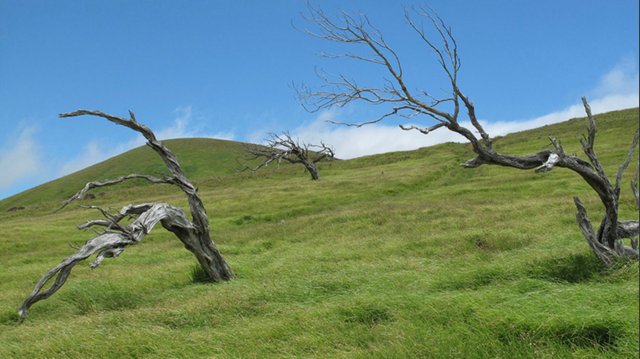 ... compared to how they look in the final piece.
... compared to how they look in the final piece.
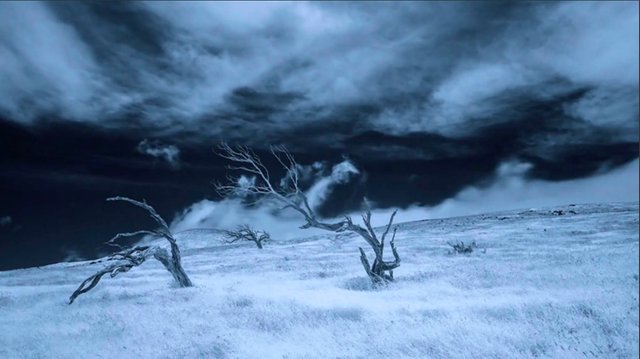 I’d been thinking about how to best capture their shapes and had already decided that I wanted to create this piece monochromatically so that the color of the grass and sky wouldn’t detract from their beauty. I used a 650-nanometer infrared converted Nikon 5200, which supported live view mode, allowing me to get critical focus even when shooting infrared with various lenses, mostly using a Tokina 11-16/f2.8 and a Nikkor 24-120/f4 for this shoot, along with some strong neutral density filters for allowing slower shutter speeds and a great portable travel tripod (the Mefoto A1350, which has spiked feet for solid gripping on rock).
Here’s a snapshot of what my rig looked like. Super compact and portable:
I’d been thinking about how to best capture their shapes and had already decided that I wanted to create this piece monochromatically so that the color of the grass and sky wouldn’t detract from their beauty. I used a 650-nanometer infrared converted Nikon 5200, which supported live view mode, allowing me to get critical focus even when shooting infrared with various lenses, mostly using a Tokina 11-16/f2.8 and a Nikkor 24-120/f4 for this shoot, along with some strong neutral density filters for allowing slower shutter speeds and a great portable travel tripod (the Mefoto A1350, which has spiked feet for solid gripping on rock).
Here’s a snapshot of what my rig looked like. Super compact and portable:
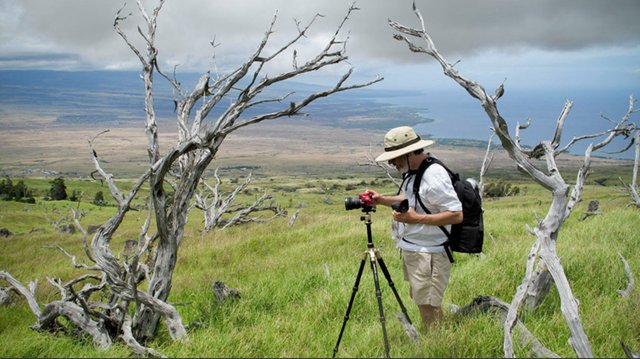 For me, one of the most powerful shots in the piece was made with the 24-120 at 120mm, 1:16 into the film. It’s a shot of one tree in the foreground with a storm moving over the plain that lies between the Kohala and Mauna Kea volcanos. As the storm is passing over the land, it looks like the ocean roiling and bubbling. Compressing 25 miles of space so tightly (that’s Waikaloa Village in the midground, frame right) creates a beautiful optical illusion, and is a great reason to always bring multiple lenses with different focal lengths so you can explore visual compression and expansion.
Of course I shot RAW files which allowed me to white-balance the infra-red images in Adobe Lightroom on my laptop back at my rental house. But there are challenges you must overcome in Lightroom when processing infra-red images because no matter how cool you make the image using the WB Temp slider, there will still be a red cast. So after googling around, I found a few people who had figured this out using the Adobe DNG Profile Editor. It’s simple to make a new camera profile just for infra-red images and load that into Lightroom!
For me, one of the most powerful shots in the piece was made with the 24-120 at 120mm, 1:16 into the film. It’s a shot of one tree in the foreground with a storm moving over the plain that lies between the Kohala and Mauna Kea volcanos. As the storm is passing over the land, it looks like the ocean roiling and bubbling. Compressing 25 miles of space so tightly (that’s Waikaloa Village in the midground, frame right) creates a beautiful optical illusion, and is a great reason to always bring multiple lenses with different focal lengths so you can explore visual compression and expansion.
Of course I shot RAW files which allowed me to white-balance the infra-red images in Adobe Lightroom on my laptop back at my rental house. But there are challenges you must overcome in Lightroom when processing infra-red images because no matter how cool you make the image using the WB Temp slider, there will still be a red cast. So after googling around, I found a few people who had figured this out using the Adobe DNG Profile Editor. It’s simple to make a new camera profile just for infra-red images and load that into Lightroom!
Here’s a good description of the process:
Calibrating White Balance to Process Infrared Images
or
An In-depth Guide to Digital Photographic Infrared Processing
Once I had the white balance adjusted correctly, I used LR Timelapse to create time-lapse sequences with all of the other raw parameters I chose for contrast, clarity, exposure, etc. After each day of shooting I’d render a set of proxy animations to make sure I had what I needed, and if shots didn’t work out I’d schedule reshoots for the next day. Here’s what the raw files look like in the preview window of LR Timelapse before white balance adjustment.
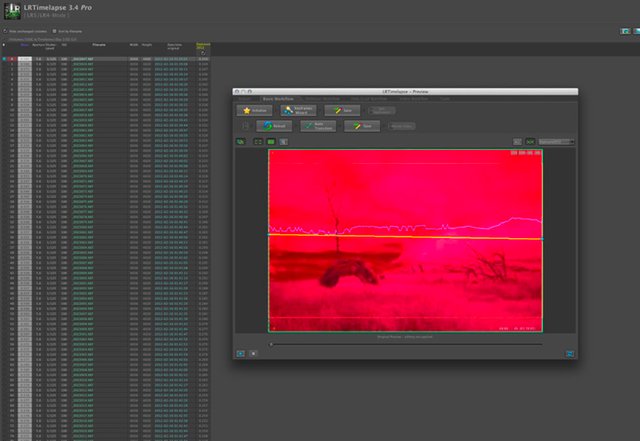 After four days of shooting, my wife Sondra saw the footage and suggested that the film needed an actual spirit to emphasize the haunting feeling of the place. The question was… How to film a spirit? Because the 650 nanometer IR filter is directly on the sensor, the D5200 can shoot IR video and I filmed my wife dressed in a shroud, walking near one of the trees. Without moving the camera I then made a time-lapse shot from the same perspective. Those two shots were then composited together in After Effects using three layers; the top layer was applied using the Overlay mode, the next layer was applied using Linear Light, and the bottom layer was the timelapse sequence. A simple feathered oval mask was tracked on both ghost layers to isolate them and give them a small halo. I slowed the real-time sequence down in FCPX using Optical Flow, which added to the ghostly effect, and contrasted the slowed-down spirit with the sped-up clouds. In an upcoming Steemit post about Time-lapse filmmaking, I'll talk about how it’s important to incorporate narrative elements to amp up the emotional impact of a time-lapse piece.
When I got home to California I re-rendered each scene in ProRes 4:2:2 format using LR Timelapse, and then cut everything together in Final Cut Pro X. The next step was finding a look for the piece and I didn’t want to go with something that obviously shouted “infra-red” but still it was crucial to create a dreamlike feel. Using a deep periwinkle blue palette created a beautiful otherworldy grade and the FCPX color board made this very easy. Here’s how the final piece looks inside the editor:
After four days of shooting, my wife Sondra saw the footage and suggested that the film needed an actual spirit to emphasize the haunting feeling of the place. The question was… How to film a spirit? Because the 650 nanometer IR filter is directly on the sensor, the D5200 can shoot IR video and I filmed my wife dressed in a shroud, walking near one of the trees. Without moving the camera I then made a time-lapse shot from the same perspective. Those two shots were then composited together in After Effects using three layers; the top layer was applied using the Overlay mode, the next layer was applied using Linear Light, and the bottom layer was the timelapse sequence. A simple feathered oval mask was tracked on both ghost layers to isolate them and give them a small halo. I slowed the real-time sequence down in FCPX using Optical Flow, which added to the ghostly effect, and contrasted the slowed-down spirit with the sped-up clouds. In an upcoming Steemit post about Time-lapse filmmaking, I'll talk about how it’s important to incorporate narrative elements to amp up the emotional impact of a time-lapse piece.
When I got home to California I re-rendered each scene in ProRes 4:2:2 format using LR Timelapse, and then cut everything together in Final Cut Pro X. The next step was finding a look for the piece and I didn’t want to go with something that obviously shouted “infra-red” but still it was crucial to create a dreamlike feel. Using a deep periwinkle blue palette created a beautiful otherworldy grade and the FCPX color board made this very easy. Here’s how the final piece looks inside the editor:
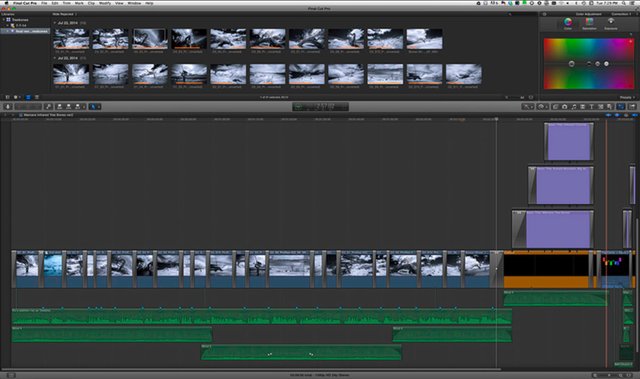 Once the look of the film had been established, I researched finding the most appropriate soundtrack that would compliment the haunting feel of the piece. After doing a half-day of research I found a Hawaiian pre-European love chant by Charles Albert Manu'alkohanaiki'illili Boyd. His chant brought the piece into clear focus and gave me the inspiration I needed for the edit -- his pauses and breaths were a perfect counterpoint to the movement of the clouds. (The full translation is in the Youtube description.) I added a very limited number of camera moves in post (panning, tilting and some subtle pushes) and then finally put a windy soundtrack behind the chant, giving Boyd’s voice some ambience.
Once the look of the film had been established, I researched finding the most appropriate soundtrack that would compliment the haunting feel of the piece. After doing a half-day of research I found a Hawaiian pre-European love chant by Charles Albert Manu'alkohanaiki'illili Boyd. His chant brought the piece into clear focus and gave me the inspiration I needed for the edit -- his pauses and breaths were a perfect counterpoint to the movement of the clouds. (The full translation is in the Youtube description.) I added a very limited number of camera moves in post (panning, tilting and some subtle pushes) and then finally put a windy soundtrack behind the chant, giving Boyd’s voice some ambience.
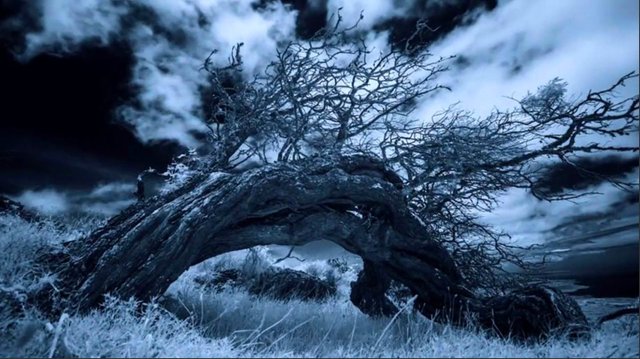 My intention when creating any short film or photograph is for the viewer to feel something. I hope that, when you watch this 2-1/2 minute piece, the hair stands up on the back of your neck the way it does on mine. (As they say in Hawaii, “it’ll give you chicken skin.”)
Thanks for watching.
My intention when creating any short film or photograph is for the viewer to feel something. I hope that, when you watch this 2-1/2 minute piece, the hair stands up on the back of your neck the way it does on mine. (As they say in Hawaii, “it’ll give you chicken skin.”)
Thanks for watching.
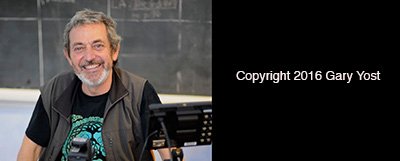 You can find my verification post here.
You can find my verification post here.














I have so much to learn. Thank you this is an amazing picture and the explanation of the process is like school for me.
So happy you enjoyed it.
That was beautiful to watch and eerie :)
You were successful in your intentions of making me feel something. These photos and that time-lapse are epic!
Thanks for let me know how it affected you.
Your welcome!
!! Many thanks !! for this thoroughly enjoyable and informative post. The video itself is an exceptionally creative work, and then there's the amazing backstory and the technical explanation. You're a superb artist and craftsman. Much Respect!